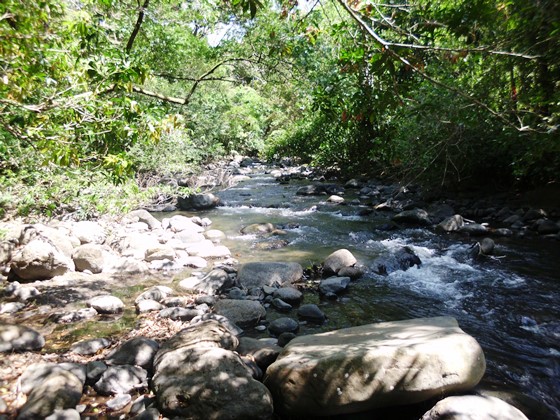
Forestry Project
After 30 years of practicing agroforestry in Costa Rica and demonstrating the benefits of regenerative agriculture, at Rancho Colibri we asked ourselves the question, "now that our land has appreciated in value tenfold, at today's land value how can a farmer achieve an economic return approaching 10%?" Carbon ranching/regenerative grazing has been able to double soil organic matter/SOM in ten years, in our case from 4%-8%. We wondered if it would be feasible to achieve a high return by producing trees for timber using our agroforestry model. Since 2000 our farm has consisted of 30 ha / 75 acres, and we practice the following principles of regenerative agriculture:
In November of 2017 I attended the 1st Symposium of Native Tree Species in Costa Rica, held at the Horizontes Experimental Station within the Guanacaste Conservation Area-a division of national parks that investigates forestry practices. Despite the success of reforestation throughout the country since the 80's, reversing deforestation to increasing forest cover, the country's timber industry did not keep pace with demand. Construction grade timber is now largely imported pine from Chile, and the two dominant timber species that are commercially produced are the "exotics" teak and gmelina. Costa Rica's academic foresters posed the question, "how could the country produce commercial timber from native tree species?" The conclusion of the 1st Symposium was that the country should focus on 10-12 species, 5-6 species that would excel in dryer regions and the same number for wetter regions. The National Commission of Native Tree Species was formed to focus on this task and provide recommendations.
Several reports were published and in November of 2019 the 2nd Symposium of Native Tree Species was held at the same location as two years prior. Although unanimous consent had not been achieved as to which dozen species should be promoted nationwide, there was general agreement which species should be prioritized. There also was a shared concern that farmers:
Carbon credits in the form of PSA's (Payments for Environmental Services) are available nationally through FONAFIFO. In general terms, a PSA can subsidize the first five years of forest production, and in theory starting in year six a farmer could begin to generate cash flow from the thinning of the forest stand. Some trees would be ready to harvest after 16 years of growth, and after 20 years the majority of trees ought to be ready to harvest (although it could take some trees 25 years to achieve desired results).
Although the general consensus is that after 20 years a farmer could gross a return of more than 500%, to maximize return it is recommended that the farmer be able to harvest and mill into rough boards the timber for wholesale. There currently exists appropriate technology to accomplish this-the necessary equipment can be purchased for US$15,000. A forestry management plan needs to be registered with the environmental agency, MINAE, in order that the necessary permits be obtained for harvest. Trees for timber production have a different set of requirements than fruit trees or other trees that are utilized in an agroforestry system.
After assessing the technical information to determine which species ought to grow best given our environmental conditions, as well as high economic returns, we have decided to focus on the following species: Mahogany (Swietenia macrophylla), Spanish cedar (Cedrela odorata), Guanacaste (Enterolobium cyclocarpum), Cenizaro (Samanea saman), Laurel (Cordia alliodora), Ipe (Tabebuia impetiginosa), Cristobal (Platymiscium dimorphandrum), Chicle (Manilkara zapota), Oak (Quercus oleoides), Ron Ron (Astronium graveolens), Rosewood (Dalbergia retusa), and Madero (Gliricidia sepium). Planting of the first 2,000+ trees is scheduled to begin once the rainy season of 2020 commences, May-June. All 10,000 trees should be planted by 2024.